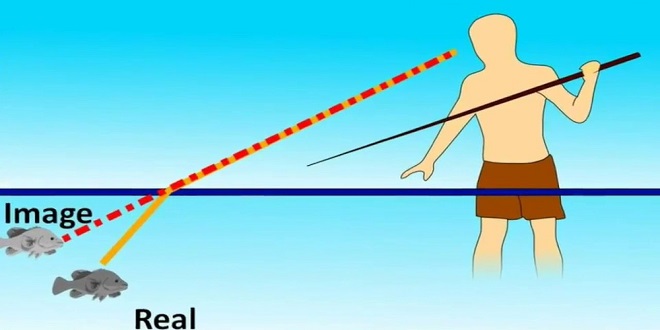
As we know from everyday experience when light arrives at an interface between materials it partially reflects and partially transmits. In this chapter, we examine what happens to plane waves when they propagate from one material (characterized by indices n or even by complex index N ) to another material. We will derive expressions to quantify the amount of reflection and transmission.
The results depend on the angle of incidence (i.e. the angle between k and the surface normal) as well as on the orientation of the electric field (called polarization – not to be confused with P, also called polarization). In this chapter, we consider only isotropic materials (e.g. glass); in we consider anisotropic materials (e.g. a crystal). As we develop the connection between the incident, reflected, and transmitted light waves,1 several familiar relationships will emerge naturally (e.g. Snell’s law and Brewster’s angle).
The formalism also describes polarization-dependent phase shifts upon reflection (especially interesting in the case of reflections from metals). For simplicity, we initially neglect the imaginary part of the refractive index. Each plane wave is thus characterized by a real wave vector k. We will write each plane wave in the form E(rt) = E0 exp[i (k· r−ωt)], where, as usual, only the real part of the field corresponds to the physical field. The restriction to real refractive indices is not as serious as it might seem.
The use of the letter n instead of N hardly matters. The math is all the same, which demonstrates the power of the complex notation. We can simply update our expressions in the end to include complex refractive indices, but in the meantime it is easier to think of absorption as negligible.
Refraction at an Interface
The s component E (s) i is represented by the tail of an arrow pointing into the page, or the x-direction in our convention. The other fields Er and Et are similarly split into s and p components as indicated in . 3.1. All field components are considered to be positive when they point in the direction of their respective arrows.3 Note that the s-polarized components are parallel for all three plane waves, whereas the p-polarized components are not (except at normal incidence) because each plane wave travels in a different direction. By inspection of we can write the various wave vectors in terms of the yˆ and zˆ unit vectors.
The Fresnel Coefficients
Augustin Fresnel first derived the equations in the previous section. Since he lived well before Maxwell’s time, he did not have the benefit of Maxwell’s equations as we have. Instead, Fresnel thought of light as transverse mechanical waves propagating within materials. (Fresnel was naturally a proponent of the luminiferous ether.) Instead of relating the parallel components of the electric and magnetic fields across the boundary between the materials, Fresnel used the principle that the two materials should not slip relative to each other at the boundary.
This ‘gluing’ of the materials at the interface also forbids the possibility of gaps or the like forming at the interface as the two materials experience wave vibrations. This mechanical approach to light worked splendidly, arriving at the same results that we obtained from our modern viewpoint.
Last word
Fresnel wrote the relationships between the various plane waves depicted in in terms of coefficients that compare the reflected and transmitted field amplitudes to those of the incident field. In the following example, we illustrate this procedure for s-polarized light. It is left as a homework exercise to solve the equations for p-polarized light.





